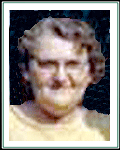 One hundred square rods of ground, now
known as Onondaga Center Burial Ground was deeded by C.M.
Maynard to the Onondaga Center Burial Ground Association on
February 7, 1845, provided that the members of the
Association would build a good board fence around the
cemetery and stake out lots in a convenient form and order.
Also, whoever bought a lot must agree to become a member of
the Association and be subject to all taxes and assessments
levied at any time for support and improvement of the burial
ground.
One hundred square rods of ground, now
known as Onondaga Center Burial Ground was deeded by C.M.
Maynard to the Onondaga Center Burial Ground Association on
February 7, 1845, provided that the members of the
Association would build a good board fence around the
cemetery and stake out lots in a convenient form and order.
Also, whoever bought a lot must agree to become a member of
the Association and be subject to all taxes and assessments
levied at any time for support and improvement of the burial
ground.
Thirty-three charter members purchased
lots. There were 36 lots laid out with Lot 1 being too wet.
Each lot was 16 feet by 22 feet in size. The elected sexton
was allowed no more than one dollar for opening and closing
a grave (and that was all hand labor in a time when 50 cents
a day was high wages).
On April 16, 1859, William B. Noble
offered an additional piece of land on the south side of the
burial ground. His offer was accepted and one dollar was
paid for the deed to make it legal.
In 1876, A.S. Noble deeded 24 feet the
full length of the east side to the Burial Ground. A new
fence was now needed and E.S. Lane built it for $75
including material using pine boards and oak posts. There
was an assessment of fifty cents a lot as there had been
several times in the past, to pay for this improvement.
A list of lot owners was placed in the
Secretary’s book on June 2, 1883 with Lot 109 being in size
21 by 70 feet being designated as Potter’s Field. (Most
cemeteries have a portion usually along the back fence, for
burial of indigent or unidentified persons). There were now
97 lots owned, 19 vacant and Potter’s Field. At this time,
there also were 260 graves recorded in 38 years.
In April, 1890, it was decided to have
the cemetery cleaned once a year. The pay for this work was
to be four dollars. A new fence was also authorized, using
such boards as ere good and the balance was of first quality
pine; also, first quality pine posts were needed. The job
was let to Ira Eldred at twenty cents per rod. He was
required to remove all rubbish from both sides of the fence
and leave the grounds in good order.
On April 18, 1908, the old wood fence
was sold to the highest bidder, W.O. Stone, for $6.25 and a
steel fence erected which cost $67.48. The assessments by
now were one dollar per lot.
On January 27, 1916, it was decided to
have the cemetery cleaned twice a year between May 1-10 and
August 15-30. Pay was still four dollars.
This cemetery has been variously called
Onondaga Center Burial Ground, Baldwin, East Onondaga and we
know it now as Lane Cemetery. It is located on Bellevue
Road. The first record of it being called Lane Cemetery was
in 1898.
Onondaga Cemetery, located just west of
the village began its existence as the Booth Family Burial
Ground. It was deeded to the township on September 10, 1841
by Silas and Nancy Booth to Amos Steele, Orin Cranson, L.
Sherman, Jeduthan Fry, Mosely Baldwin, Benjamin Rossman and
Parme Rossman, Township officials and was one and one half
acres in size.
I could not find much information about
his cemetery but would appreciate hearing from you if you
haven any. Many records were lost when our township hall
burned some years ago.
For those who think fondly of the Good
Old Days, cause of death on the old burial permits might
make you wonder if they were so great. Children died of
blood poisoning, measles, diphtheria, scarlet fever,
whooping cough and many did not live to be five years old.
Babies died of Cholera Infantum, prematurity (Stillborn,
generally) and pneumonia. Some just starved for “lack of
anything that agreed with them.” Many young folks died of
Consumption (Tuberculosis), LaGrippe, Typhoid, pneumonia,
and accidents. Older folks (anyone over 60) might have heart
failure, paralysis, general old age, cancer, dropsy,
gangrene of feet, worn out heart, and, if all else failed,
“natural causes.”
It was not uncommon to see a grave lot
with three to five graves marked “children of J.R. Smith,”
etc. Women were not equals then. The cemetery lots were
owned by the husbands and no women belonged to the
Association, either. Since childbirth was a not uncommon
cause of death in those days, some plots might have one man
and two or three wives buried together, usually a wife on
each side of the husband and, if he had, by chance, a third
wife, she might be buried at his feet.
Florence
Toburen, Onondaga

